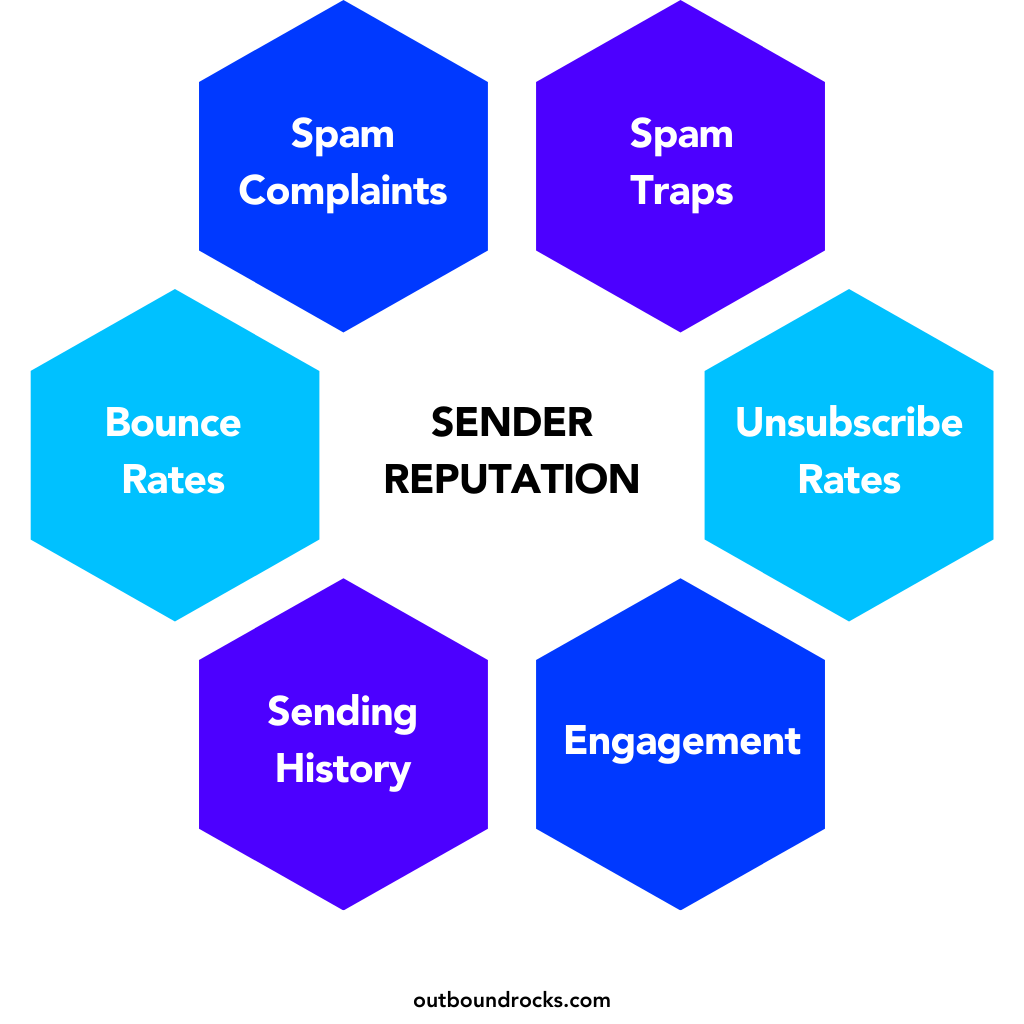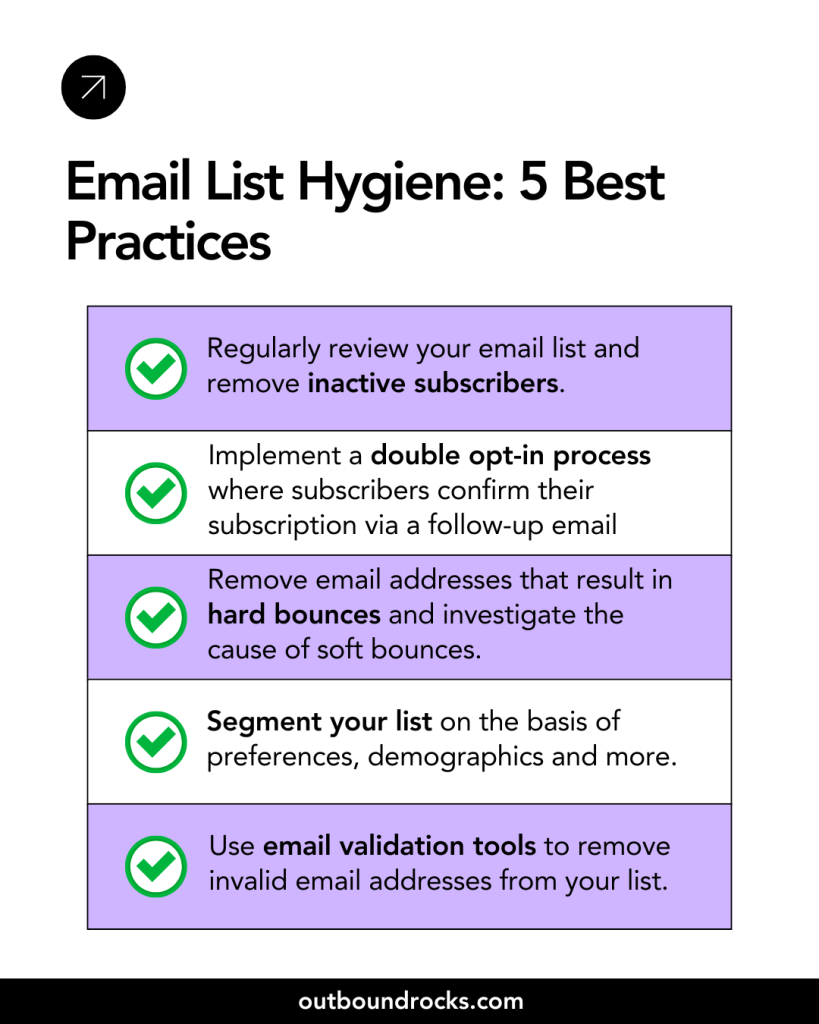A low sender score can spell disaster for your email marketing campaigns, leading to poor deliverability and reduced engagement.
If your carefully crafted emails are ending up in spam folders or being bounced, it’s time to take action.
In this article, we explore the common causes of low sender scores and practical solutions to address them.
From enhancing your email content to improving your sending practices, this guide will provide you with actionable steps to boost your sender score and optimise your email deliverability.
TABLE OF CONTENTS
– What is a sender score?
– Why is my sender score low?
– Actionable steps to improve your sender score
– Conclusions
What is a sender score?
A sender score is a numerical rating, typically between 0 and 100, that reflects the reputation of an email sender’s IP address. It is calculated based on various factors such as email bounce rates, spam complaints and the quality of email content.
Why is important to keep high?
✅ A high sender score increases the likelihood that your emails will reach their intended recipients, ensuring better engagement and effectiveness of your email marketing campaigns.
❌ Conversely, a low sender score can result in emails being filtered into spam folders or bounced, severely hindering your communication efforts and potentially damaging your brand reputation.
Why is my sender score low?
Key metrics that affect your sender score include:
- Inconsistent email volume: Sending email in inconsistent volumes can alert ISPs. ISPs may perceive a sudden increase in the number of emails sent as spammy behavior.
- Irregular sending frequency: Irregular sending schedules can also raise red flags. Maintaining a consistent frequency helps build trust with mailbox providers.
- New IP address: Sending email from a new IP address without proper warm-up can negatively impact your sender score. ISPs are wary of new IP addresses that suddenly send large volumes of email.
- Blacklisting: getting blacklisted can seriously damage your sender score. ISPs use blacklists to block email from known spam sources.
- Spam traps: Being hit by spam traps, which are email addresses set up to catch spammers, indicates poor list hygiene and can dramatically lower your sender score.
- Spam complaints: High rates of spam complaints from recipients indicate that your emails are unwanted and can damage your reputation.
- Poor campaign results: High bounce rates, low open rates and poor engagement metrics all contribute to a low sender score.
It is important to understand that everything you do in your email campaigns affects your sender score and therefore your ability to reach your audience effectively.
Taking control of your reputation requires regular monitoring and adherence to email marketing best practices.

Actionable steps to improve your sender score
Improving your sender score involves implementing several best practices to ensure your emails are trustworthy and engaging.
Here are some actionable steps you can take:
1. Apply email authentication protocols
Start by authenticating your sender account using protocols such as DomainKeys Identified Mail (DKIM) and Sender Policy Framework (SPF). DKIM adds a digital signature to your emails, proving their authenticity to receiving servers, which helps direct your messages to the recipient’s inbox.
SPF, on the other hand, allows you to specify which mail servers are authorized to send emails on your behalf. This prevents spammers from using your domain and helps maintain a good sender reputation.
2. Set up separate email sub-accounts
Consider creating separate sub-accounts for different types of emails, such as marketing and transactional messages. This segmentation helps in tracking specific metrics and ensures that issues with one type of email don’t affect the deliverability of another.
For instance, if your marketing emails face deliverability problems, your transactional messages like order confirmations and notifications can still reach your customers without issues.
3. Keep track of your email engagement
Regularly monitor your email engagement metrics, including open rates, click rates, complaint rates, and unsubscribe rates. Positive engagement metrics are critical for maintaining a high sender score.
Tailor your email content to be responsive, engaging, and relevant to different devices and user preferences. Additionally, pay attention to the timing and frequency of your email campaigns to maximize engagement and avoid appearing spammy.
4. Perform segmentation, testing, and personalization
Segment your email list based on criteria such as interests, location, age, and gender to send more relevant content to specific groups. Use A/B testing to determine which versions of your email campaigns perform best.
This approach helps you refine your strategies based on what works, leading to better engagement and a higher sender score.
5. Have a checklist for your email marketing campaigns
Create a checklist to ensure you follow best practices for every email campaign. This checklist should include verifying a compelling subject line, eye-catching pre-header, working links, proofread content, and strong calls-to-action (CTAs).
A systematic approach ensures high-quality emails that enhance your sender score.
6. Ensure your emails are targeted and relevant
Send highly targeted and relevant content by leveraging segmentation and personalization. Avoid sending generic emails to your entire subscriber list.
Instead, tailor your messages to specific groups, increasing the likelihood of engagement and improving your sender score.
7. Send emails to permission-based contacts
Always send emails to permission-based contacts who have opted in to receive your messages. Avoid using third-party lists, as they often contain unengaged recipients or spam traps, which can harm your sender score.
Use opt-in checkboxes on your website forms to build a list of engaged subscribers.
8. Send messages using your own domain
Use your own domain for sending emails rather than free email services like Gmail or Yahoo!. A dedicated domain helps you establish and maintain a good sender reputation and allows you to apply necessary email authentication protocols.
9. Practice good email list hygiene
Maintain your email list by regularly removing inactive subscribers who haven’t engaged with your emails for a while. High bounce rates from outdated addresses can lower your sender score.
Consider running re-engagement campaigns to win back inactive subscribers, but remove those who remain unresponsive.

Conclusions
By following these tips and focusing on responsible email practices, you’ll pave the way for better deliverability, higher engagement, and ultimately, email marketing success.
Want to make sure you optimize your sender score for your Outbound Strategy? Check out outboundrocks.com to learn more!
